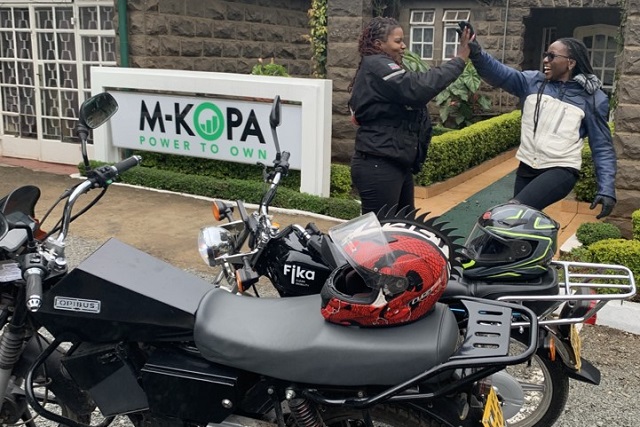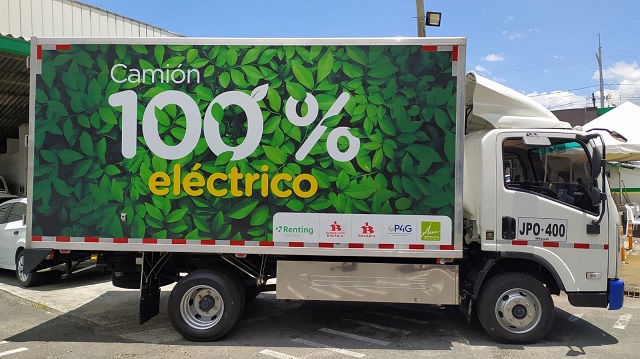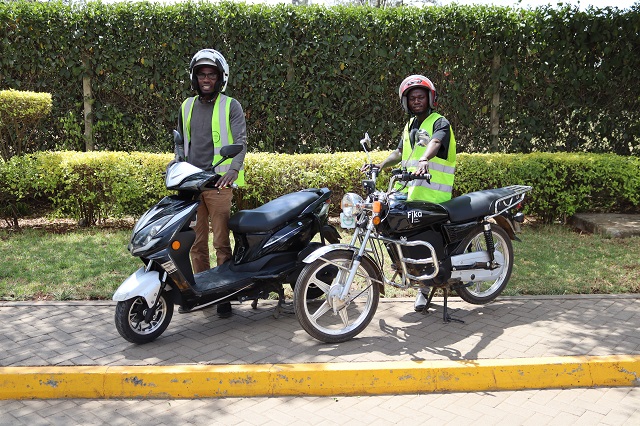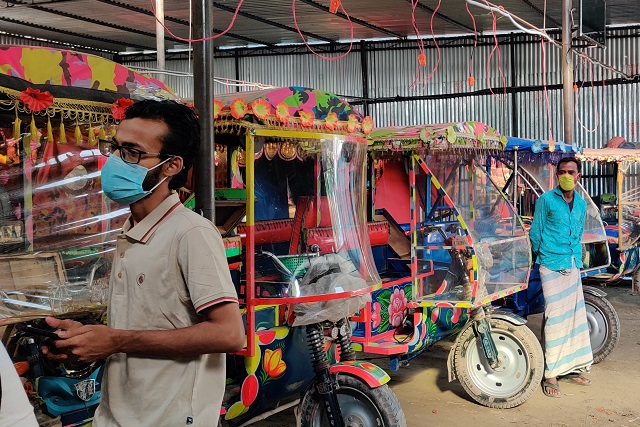
As the pandemic has changed the way we get around and purchase goods, the world is considering how to make transport more efficient and sustainable. We’ve seen increasing efforts to expand electric mobility, as governments formulate policies to stimulate adoption of electric vehicles, companies roll out new models, from cars to bikes, and consumers start to see more affordable options.
While much of the recent buzz around e-mobility has focused on private vehicles in wealthier countries, meeting global decarbonization goals and ensuring an equitable transition means addressing varied modes of transportation around the world. So how are countries across Asia, Africa and Latin America electrifying transport in the local context?
At Partnering for Green Growth and the Global Goals 2030 (P4G), within our Energy Transition theme, we provide catalytic funding and acceleration to address the supply and demand side of the transition, including through e-mobility work focused on the resources needed to electrify, such as batteries, charging and financing. In P4G’s partner countries, expanding electric transportation is key to meeting national emissions reduction targets, creating economic growth and improving residents’ health. These emerging solutions will help small and medium business operators and individuals increase access to e-mobility and improve livelihoods.
1. Electric Truck Rentals in Colombia
Over the past decade, deteriorating air quality in Colombia has become a pressing environmental concern, with most vehicles powered by fossil fuels. Freight transport accounts for half of all transport emissions as polluting diesel trucks dominate the roadways to move goods.
Meanwhile, many businesses want to make their logistics more sustainable, but electric freight technology is relatively new, meaning limited infrastructure and high costs make it difficult for most companies to access. For example, coffee collectives like ExpoCafe practice sustainable agriculture but use diesel-powered trucks to transport fruit for processing and export. To green their value chain, the company recently participated in the Sustainable Mobility in Cargo Transportation partnership, which sponsored small and medium businesses to install a charging station and receive a free month of electric truck rental, reducing the cost barrier and proving the efficacy of electric transport. For the drivers, it meant a safer, more comfortable work environment; for Colombians, it could mean cleaner air to breathe in their communities.

Yet a desire to green operations doesn’t always make it a reality. That’s why the partnership also conducted a legal study and webinars for companies and local officials to better understand electric trucks and lower the perceived barrier to entry. Additionally, by aligning with the country’s National Electric Mobility Strategy in contributing to their goal of rolling out 2,000 zero-emission heavy vehicles in the next 15 years, the partnership received political buy-in and support from Colombia’s National Planning Department.
Over a four-month pilot, the partnership enabled 20 businesses to make deliveries across 58,000 kilometers and helped avoid 36.7 tons of CO2 emissions.
2. Financing and Battery Infrastructure for Electric Two-Wheelers in Kenya
In Kenya, boda-bodas (motorbike taxies) are a popular form of transportation, with the number of riders expected to triple by 2030. On average, motorcycles pollute 10 times more than cars, making electrification essential. However, for most Kenyans, shifting to electric motorcycles (e-bikes) is too expensive due to higher upfront costs, despite lower costs over the lifetime. In addition, many riders lack confidence in the battery’s ability to last the distance they need to drive each day, also known as range anxiety.
P4G’s PayGo for E-bikes partnership looks to solve the financing challenge by enabling riders to pay an affordable daily rate to switch to e-bikes and quickly charge their batteries, which will cost less than existing costs of petrol bike financing, fuel and maintenance. The partnership will also install charging stations that any e-bike rider can use, regardless of manufacturer, making charging more accessible and reducing range anxiety. Recognizing the challenges of a male-dominated sector, the partnership also aims to improve women’s access to own and operate e-bikes through targeted product design and outreach.

Meanwhile, the ChargeUp! partnership is focusing on accelerating the battery-swap model. The partnership will establish 45 battery-swap charging stations across Nairobi that will charge a small fee for drivers to swap out their discharged battery with a fully charged one and quickly return to driving. Both partnerships will provide a boost to the nascent local e-bike manufacturing industry and create jobs for station operators, mechanics and bike manufacturers.
These partnerships, which build on previous studies on e-mobility’s market viability in Kenya, are working with support from the Kenya P4G National Platform to build new models for electric mobility. P4G and the National Platform have also partnered with WRI and the Kenyan government, which has shared its priorities for an equitable transition to e-mobility through public and private sector collaboration, to develop a comprehensive strategy to build a stronger enabling policy and regulatory environment for electric mobility.
3. Better Batteries for Electric Three-Wheelers in Bangladesh
Three-wheeler bikes in Bangladesh are an affordable, accessible and quick mode of urban transport. While three-wheelers have started to shift toward electrification, charging infrastructure remains informal and powered mainly by fossil fuels. Most electric three-wheelers use lead-acid batteries, which lack sufficient capacity to last the distance drivers need. Additionally, many drivers lack the funds to pay upfront for electric vehicles.
Smart Charging for Green Rides plans to address these challenges and make three-wheelers more sustainable by switching to lithium-ion batteries. Compatible with existing electric three-wheelers, but with a longer lifetime, these batteries could help boost driver incomes by 25%. The batteries will be sold to garage owners, who loan them to electric vehicle drivers on a pay-per-use basis.

In 2020, the government of Bangladesh drafted a strategy to ensure at least 15% of vehicles are electric by 2030. Partnerships like this one build out the charging infrastructure and financing needed to make electric transport more affordable to more residents and reduce pollution for healthier cities.
Three Lessons to Scale Impact
While these partnerships offer promising solutions, they alone are not enough. We need to leverage lessons from these emerging models to replicate and scale e-mobility across low- and middle-income countries.
First, these partnerships demonstrate how context is key. By prioritizing an essential form of transport in their region and shifting that to electric, the partnerships serve local needs while making electric transport affordable and accessible. Importantly, P4G works with these partnerships to align with their country’s climate and development priorities – a key element to securing the policy support needed to achieve progress.
Second, the partnerships are collecting data to better understand the constraints and barriers to e-mobility. This data, rather than guarded as a proprietary secret, is shared with stakeholders, so the electric transition isn’t dominated by just one company. By driving data-informed decisions, the partnerships enable greater expansion of e-mobility – and prove to governments and investors that the approach is effective. This transparency ensures investors clearly understand the risks and impacts, which is crucial to securing investments and building a pipeline of viable e-mobility solutions.
Finally, these partnerships center equity at the core of the transition. By working with small and medium businesses, bringing more women into the sector, and increasing driver incomes, these partnerships make sure the transition isn’t just limited to those with money and technology.
As global climate negotiations this year focus on mobilizing finance, the private sector is looking for investable solutions in developing countries. These are the innovative business models that can fill that gap and ensure more people have access to safe, affordable e-mobility. Now governments and investors need to steer the ride.
Leila Yim Surratt is Director of Strategy and Engagement at P4G.
Sarbinder Singh is Director of Investments at P4G.
Hali McKinley Lester is a Communications Specialist at P4G.






